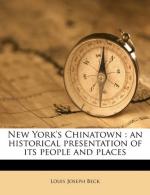|
This section contains 2,044 words (approx. 7 pages at 300 words per page) |

|
Brilliant Center. The early Tang period (618-907) was a brilliant era in which Buddhist monasteries thrived. They became cultural centers for both laymen and adherents, and they fulfilled many important social roles. Scholarly monks—who specialized in such arts as poetry, painting, and calligraphy—studied Buddhist philosophy, practiced techniques of concentration, and debated points of doctrine with priests in monasteries or mountain hermitages. By the eighth century Buddhism was widely accepted and recognized as the dominant faith throughout the Tang empire. The principles of Buddhism were respected and its spiritual truths were unchallenged; the faith had a significant impact on the lives of all people and communities. Buddhism, the universal religion for most Asian people, not only formed an integral part of society and politics at that time, but the Chinese branch of the faith also became a sort...
|
This section contains 2,044 words (approx. 7 pages at 300 words per page) |

|




